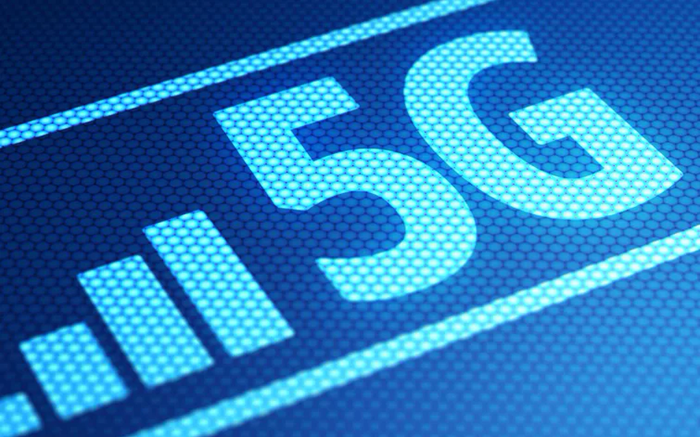5G stands for fifth-generation technology, and if you’ve heard anything about it, you know it’s all the rage. Companies competing for top spots in the telco space are investing in 5G technology, and consumers are becoming increasingly less content with 4G speeds.
So, what’s the buzz surrounding 5G?
5G is the fastest, smartest wireless technology to date. In general, the higher the “G,” the quicker and more efficient the connection. 1G introduced the world to real-time talk. 2G brought us texting, 3G let us go online, and 4G LTE brought high-speed streaming and lightning fast speeds.
At the time, 4G surpassed limits no other generations could. But now consumers want more, which is where 5G comes in. With 5G, latency is lower than ever, streaming videos is virtually instant, and phones can connect to more devices.
And that’s the capabilities we currently know of—we’re still learning everything there is to know about 5G, because it’s just the beginning.
5G is as big of a deal as it sounds
5G is the foundation for the internet of things (IoT), automated driving, virtual reality, and more. There’s a lot of talk about what 5G can become, but here’s what we know about what it is so far:
- Makes it easier to connect more devices to your phone
- Has lower latency than 4G
- Ability to connect a lot more devices at once
- Increased security and data privacy
The strength of your wireless connection depends on what your signal runs on. Here are the three categories of signal bands:
Low-band: Performs in frequencies below 1GHz. Oldest version to date. Is commonly used in 2G.
Mid-band: Performs in the 1-10GHz range. Is commonly used in 3G and 4G.
High-band, or millimeter-wave: Designed for 5G. Performs mostly in airwaves in the
20-100GHz range. It has an 800-foot distance range from cell towers.
Currently, 4G networks operate in mid-band. 5G takes frequencies up a notch by operating in a millimeter-wave—an area previously unused for mobile devices. The results? Untapped space for phone usage, without any crowding. This means faster airwaves, but shorter range. 5G is comparable to fiber gigabit internet speeds—it’s more instant, has quicker download speeds, and uses a different technology than its predecessors.
How is it different than 4G?
5G is designed to be 100x faster than 4G. The same way 4G reinvented the wheel on mobile internet speeds, 5G is set to outdo 4G’s best efforts. Aside from greater overall efficiency and speed, the key difference between the two is latency.
Latency is the length of delay between the sending and receiving of information. Low latency means minimal delay and shorter wait time while you’re streaming videos or scrolling through Instagram. 5G has lower latency than 4G, meaning a shorter period of delay. 4G latency averages 200 milliseconds, which is about the same time it takes a human to catch a ball that’s flying at them. 5G brings it down to 1 millisecond—which is virtually instantaneous.
5G also has the capacity for higher bandwidth, allowing you to connect your phone to as many devices as you please. Carriers can squeeze only a certain set of data on the same radio frequencies. The more crowded a radio frequency gets (a.k.a. the more people using it), the slower the service and the greater the chance your connection will drop.
5G is meant to overcome this through MIMO (Multiple Input Multiple Output). 4G stations can connect a few dozen antennas and ports to handle cellular traffic. 5G can support hundreds of ports, allowing you to add as many devices to your phone as you want without sacrificing speed.
Why should we care about 5G?
Between sharper data transfers and lower latencies, 5G is transforming mobile internet. But companies outside the telco space are already jumping on the 5G train too—because 5G affects more than wireless service.
Since 5G has virtually zero lag time, it can be used to replace real-time interactions in gaming, virtual reality, and even surgeries. With a latency of 1 millisecond, surgeons can participate in robotic surgeries from afar without fear of delayed response time.
Above all, the development of cellular transmission technology will mean a more efficient wireless connection and network.
Is 5G available everywhere?
5G is not available everywhere, but it’s expected to be within the coming years. Since it’s so new, companies are rolling out 5G only in select cities. Because 5G operates at such a higher frequency, it poses problems for cities that don’t have multiple transmitters within proximity of one another. Most 5G signals max out at 500 meters, and walls and poor weather can block wave signals. To combat this, carriers have increased the number of transmitters they put within each city (so you can pack more 5G devices into one area).
As long as there’s a transmitter within roughly 500 meters of someone at any given time, a person using 5G will have no problem. Still, because the technology is so new, it’s unlikely this will be immediately fool-proof.
Phones that aren’t 5G compatible can’t connect to 5G locations, and since 5G is still up-and-coming, major wireless providers like AT&T don’t have enough locations to service all of the US. Even then, some of its 5G cell towers are specific to business customers only.
Which companies provide 5G technology?
Since 5G isn’t fully implemented, it’s not as broadly available as 4G. Most US companies only started rolling out 5G in 2019. All four major players in the wireless carrier space offer 5G: Verizon, AT&T, T-Mobile, and Sprint. The difference? Only AT&T and Verizon have it in a considerable amount of cities.
Initially, most companies offered 5G to only business clients and select customers, but slowly but surely, wireless carriers are beginning to make it available to all customers. To check if 5G is available in your city, you’ll need to research your carrier and see where they offer 5G transmitters.
Should I invest in 5G?
It depends. Ask yourself how many devices you have connected to your phone, where you live, and how fast you want your phone to perform. 5G is revolutionizing the future, and companies are spending billions to hop on board, but there are drawbacks, and it’s not perfect just yet.
5G is still in its early stages, and there’s still a lot of design, network, cost, and coverage elements that still need to be worked out. For instance, as of right now, 5G is still a little buggy. Higher-frequency bands mean lightning-fast speeds, but higher frequencies and shorter waves can’t travel as far. Poor weather and buildings can interrupt your device’s signal, and unless you live in a city with lots of transmitters positioned close to one another, you’ll run into trouble.
That said, if you live in an area with lots of 5G transmitters and you want carte blanche, go for it. It’s lightning-fast, is capable of accommodating more devices than 4G, and has a latency of nearly zero milliseconds.





